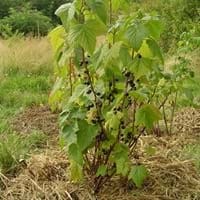Life Span
Perennial
Perennial
Origin
Not Available
Europe, Central Asia, Western Asia
Types
Not Available
Not Available
Habitat
Forests, gardens, Hill prairies, Homesteads, Rocky areas, Woodlands
Fertile bottom land, Temperate Regions
USDA Hardiness Zone
Not Available
Not Available
AHS Heat Zone
Not Available
8-3
Sunset Zone
Not Available
Not Available
Habit
Bushy, Evergreen
Upright/Erect
Flower Color
Light Green, Lime Green
Green, Purple
Flower Color Modifier
Not Available
Bicolor
Fruit Color
Green, Light Green
Purple, Black
Leaf Color in Spring
Yellow, Green, Gray Green
Green
Leaf Color in Summer
Light Green
Green
Leaf Color in Fall
Yellow, Green, Gray Green
Green
Leaf Color in Winter
Yellow, Green, Gray Green
Light Green
Leaf Shape
Ovate
Palmately Lobed
Plant Season
Spring, Summer, Fall, Winter
Spring, Summer, Fall
Sunlight
Full Sun, Partial Sun, Partial shade
Full Sun, Partial Sun, Partial shade
Type of Soil
Loam, Sand
Loam
The pH of Soil
Acidic, Neutral, Alkaline
Acidic, Neutral, Alkaline
Soil Drainage
Well drained
Well drained
Bloom Time
Early Summer, Summer, Late Summer, Early Fall
Spring
Tolerances
Pollution, Salt, Soil Compaction
Drought
Where to Plant?
Ground
Container, Ground, Pot
How to Plant?
Seedlings, Stem Cutting, Stem Planting
Seedlings, Stem Cutting
Plant Maintenance
Low
Medium
Watering Requirements
Keep ground moist, Requires regular watering, Use Mulches to help prevent water loss during hot and windy weather
Keep the ground moist but not water-logged
In Summer
Lots of watering
Lots of watering
In Spring
Moderate
Moderate
In Winter
Average Water
Average Water
Soil pH
Acidic, Neutral, Alkaline
Acidic, Neutral, Alkaline
Soil Type
Loam, Sand
Loam
Soil Drainage Capacity
Well drained
Well drained
Sun Exposure
Full Sun, Partial Sun, Partial shade
Full Sun, Partial Sun, Partial shade
Pruning
Cut or pinch the stems, Do not prune during shooting season, Remove deadheads
Remove damaged leaves, Remove dead branches, Remove dead leaves
Fertilizers
High Potash Fertilizer
10-10-10 diluted liquid fertilizer
Pests and Diseases
Bacterial Blight, Foliage-feeding caterpillars, Moth
Aphids, Earwigs, Insects, Mildew, Red blotch, Rust, sawflies
Plant Tolerance
Pollution, Salt and Soil Compaction
Cold climate
Flowers
Showy
Insignificant
Flower Petal Number
Single
Single
Foliage Texture
Fine
Medium
Foliage Sheen
Matte
Matte
Attracts
Caterpillar
Birds
Allergy
Skin irritation
Asthma, Eczema, Food Allergy, Hives
Aesthetic Uses
Not Used For Aesthetic Purpose
Not Used For Aesthetic Purpose
Beauty Benefits
Blood purifying, Glowing Skin, Good for skin and hair, Provides herbal hair care, Speed hair growth
Not Available
Environmental Uses
Air purification, soil stabilisation
Air purification
Medicinal Uses
Atherosclerosis, Cancer, Diabetes, Diarrhea, High blood pressure, High cholestrol, Obesity, Vitamin C
Potassium, Rich in Iron, Vitamin B, Vitamin C
Part of Plant Used
Fruits
Fruits, Leaves, Seeds
Other Uses
Making Shampoo, Used for its medicinal properties, Used in herbal medicines
Traditional medicine, Used as a nutritious food item, Used As Food, Used for its medicinal properties
Used As Indoor Plant
No
Yes
Used As Outdoor Plant
Yes
Yes
Garden Design
Cottage garden
Edible, Fruit / Fruit Tree, Hedges, Mixed Border
Botanical Name
Phyllanthus emblica
RIBES nigrum
Common Name
Indian Gooseberry, Amla , Awala
Black Currant
In Hindi
आमला
Black Currant
In German
Stachelbeere
Black Currant
In French
Groseille à maquereau
groseille noire
In Spanish
Grosella
negro Grosella
In Greek
Φραγκοστάφυλλο
μαύρη σταφίδα
In Portuguese
Groselha
groselha-preta
In Polish
Agrest
czarna porzeczka
In Latin
hominem
nigrum currants
Phylum
Magnoliophyta
Magnoliophyta
Class
Magnoliopsida
Magnoliopsida
Order
Malpighiales
Rosales
Family
Phyllanthaceae
Grossulariaceae
Clade
Angiosperms, Eudicots, Rosids
Angiosperms, Core eudicots, Eudicots
Tribe
Phyllantheae
Not Available
Subfamily
Not Available
Not Available
Number of Species
Not Available
Not Available
Importance of Indian Gooseberry and Black Currant
Want to have the most appropriate plant for your garden? You might want to know the importance of Indian Gooseberry and Black Currant. Basically, these two plants vary in many aspects. Compare Indian Gooseberry and Black Currant as they differ in many characteristics such as their life, care, benefits, facts, etc. Every gardener must at least have the slightest clue about the plants he wants to plant in his garden. Compare their benefits, which differ in many ways like facts and uses. The medicinal use of Indian Gooseberry is Atherosclerosis, Cancer, Diabetes, Diarrhea, High blood pressure, High cholestrol, Obesity and Vitamin C whereas of Black Currant is Potassium, Rich in Iron, Vitamin B and Vitamin C. Indian Gooseberry has beauty benefits as follows: Blood purifying, Glowing Skin, Good for skin and hair, Provides herbal hair care and Speed hair growth while Black Currant has beauty benefits as follows: Blood purifying, Glowing Skin, Good for skin and hair, Provides herbal hair care and Speed hair growth.
Compare Facts of Indian Gooseberry vs Black Currant
How to choose the best garden plant for your garden depending upon its facts? Here garden plant comparison will help you to solve this query. Compare the facts of Indian Gooseberry vs Black Currant and know which one to choose. As garden plants have benefits and other uses, allergy is also a major drawback of plants for some people. Allergic reactions of Indian Gooseberry are Skin irritation whereas of Black Currant have Asthma, Eczema, Food Allergy and Hives respectively. Having a fruit bearing plant in your garden can be a plus point of your garden. Indian Gooseberry has showy fruits and Black Currant has no showy fruits. Also Indian Gooseberry is not flowering and Black Currant is not flowering . You can compare Indian Gooseberry and Black Currant facts and facts of other plants too.





